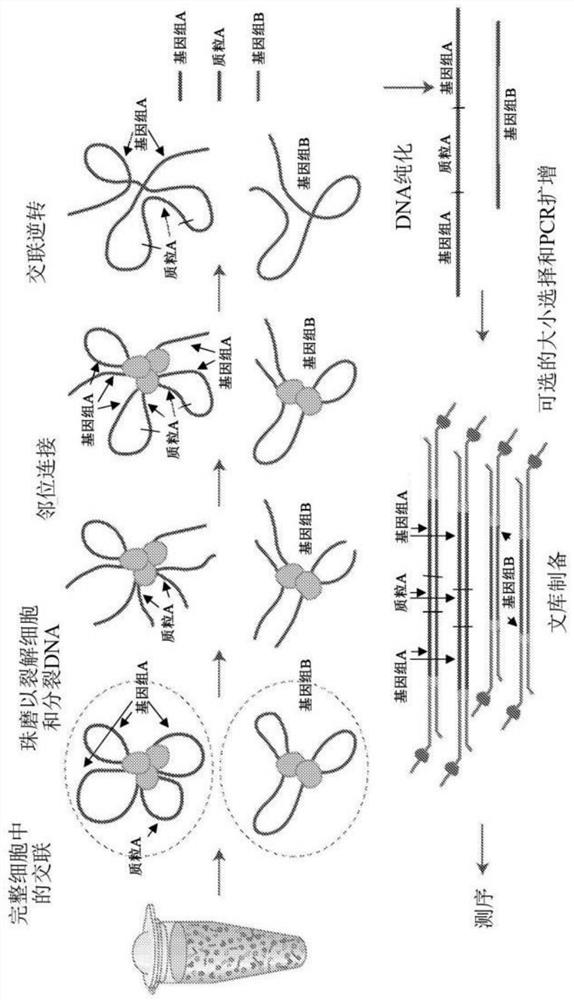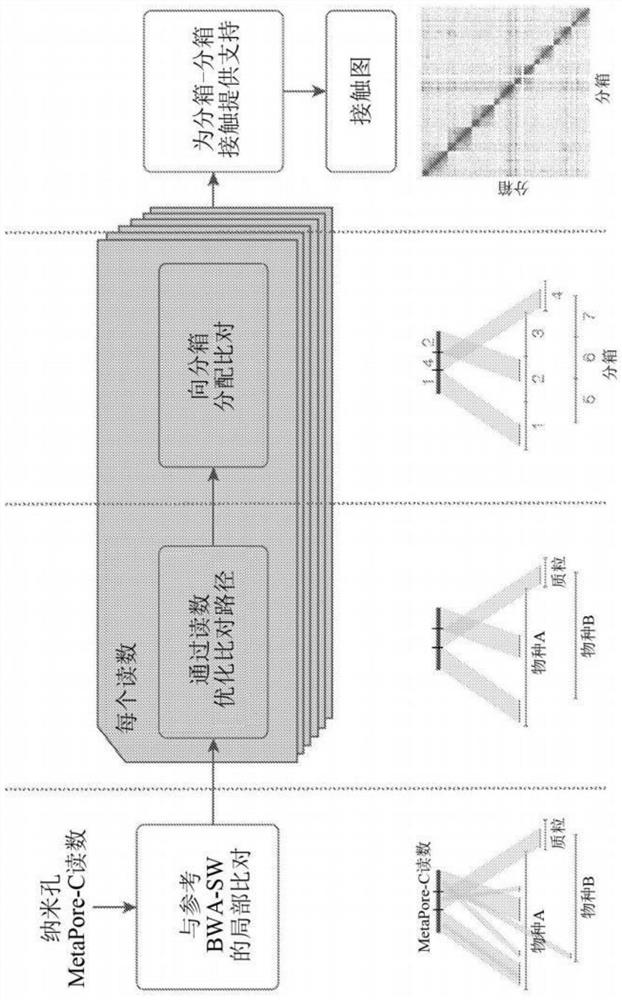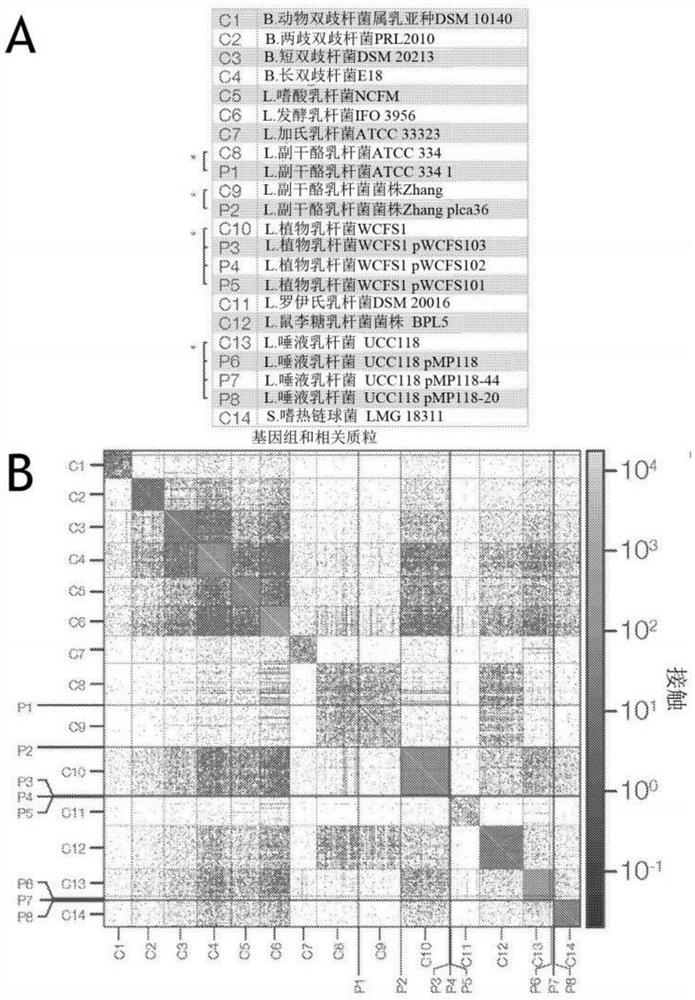Protocol for detecting interactions within one or more DNA molecules within a cell
A technology of DNA molecules and DNA sequences, applied in the field of detecting the interaction between one or more elements of DNA molecules in cells, which can solve problems such as slow development speed
- Summary
- Abstract
- Description
- Claims
- Application Information
AI Technical Summary
Problems solved by technology
Method used
Image
Examples
Embodiment 1
[0087] This example describes an exemplary laboratory workflow applicable to the present disclosure, a method for determining interactions between intracellular elements. Specifically, methods are used to study interactions between genomic elements that are not adjacent in primary sequence. In addition to simplifying assembly, the disclosed methods, when applied to metagenomic samples, provide a means of associating plasmids with their host genomes. An alternative approach for determining the interactions between one or more elements within a DNA molecule employs restriction enzyme digestion to cleave cross-linked DNA prior to performing proximity ligation. However, restriction digestion is time-consuming, and the choice of restriction enzyme is influenced by the nucleotide composition of the genome in the sample, which is not always known in advance—especially when performing metagenomic studies. The present disclosure provides a method to simultaneously lyse cells and split...
Embodiment 2
[0113] This example describes another exemplary laboratory workflow applicable to the present disclosure, a method for determining interactions between intracellular elements. Specifically, methods are used to study interactions between genomic elements that are not adjacent in primary sequence. In addition to simplifying assembly, the disclosed methods, when applied to metagenomic samples, provide a means of associating plasmids with their host genomes. An alternative approach for determining the interactions between one or more elements within a DNA molecule employs restriction enzyme digestion to cleave cross-linked DNA prior to performing proximity ligation. However, restriction digestion is time-consuming, and the choice of restriction enzyme is influenced by the nucleotide composition of the genome in the sample, which is not always known in advance—especially when performing metagenomic studies. The present disclosure provides a method to simultaneously lyse cells and ...
PUM
 Login to View More
Login to View More Abstract
Description
Claims
Application Information
 Login to View More
Login to View More - R&D
- Intellectual Property
- Life Sciences
- Materials
- Tech Scout
- Unparalleled Data Quality
- Higher Quality Content
- 60% Fewer Hallucinations
Browse by: Latest US Patents, China's latest patents, Technical Efficacy Thesaurus, Application Domain, Technology Topic, Popular Technical Reports.
© 2025 PatSnap. All rights reserved.Legal|Privacy policy|Modern Slavery Act Transparency Statement|Sitemap|About US| Contact US: help@patsnap.com



